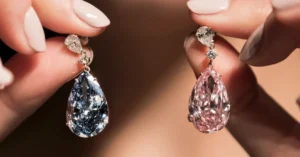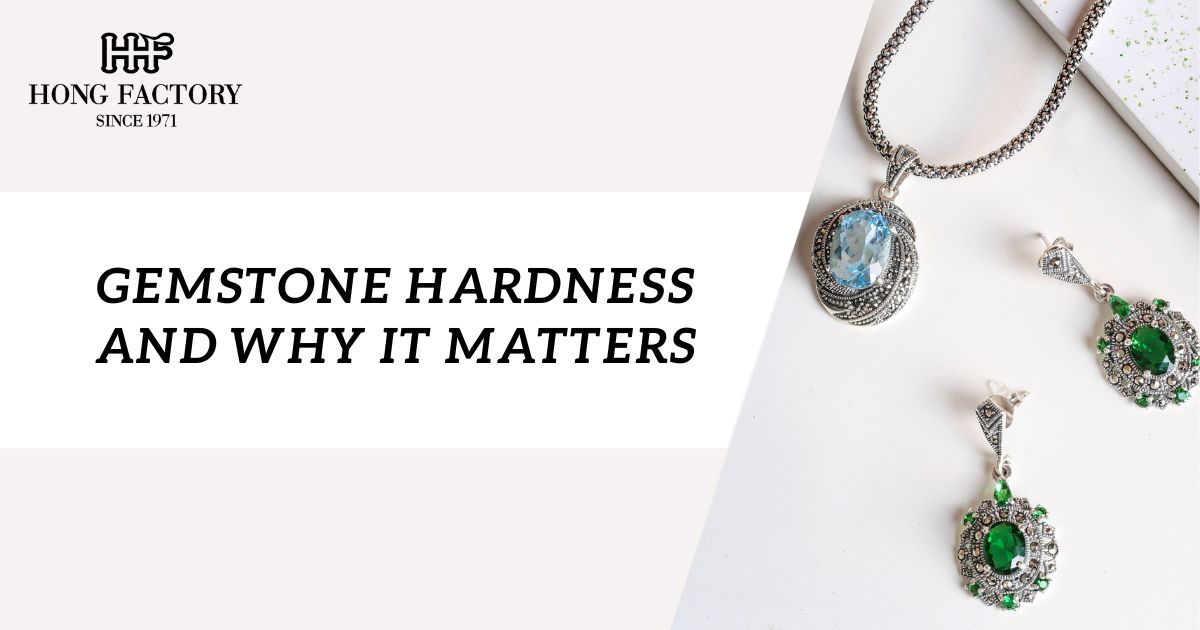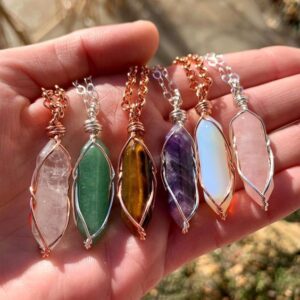Gemstones are prized for their beauty, rarity, and durability, making them a popular choice for jewelry and ornamental use. One of the most important factors in determining a gemstone’s durability is its hardness. But what exactly is gemstone hardness, and why does it matter? Understanding this concept can help consumers make informed decisions about selecting, wearing, and caring for their gemstones.
Gemstone Hardness and Why It Matters

What Is Gemstone Hardness?
Gemstone hardness refers to a stone’s ability to resist scratching and abrasion. It is typically measured using the Mohs scale of mineral hardness, which ranks minerals on a scale from 1 (the softest) to 10 (the hardest). This scale was developed by Friedrich Mohs in 1812 and remains the most commonly used method for determining a gemstone’s hardness.
The Mohs Scale of Hardness
Below is the Mohs scale with common gemstones listed for reference:
- 1 – Talc (Softest)
- 2 – Gypsum
- 3 – Calcite
- 4 – Fluorite
- 5 – Apatite
- 6 – Orthoclase Feldspar (Moonstone)
- 7 – Quartz (Amethyst, Citrine, Rose Quartz)
- 8 – Topaz
- 9 – Corundum (Ruby, Sapphire)
- 10 – Diamond (Hardest)
Harder gemstones, such as diamonds and sapphires, are more resistant to scratches, while softer stones, like opal and turquoise, require greater care to maintain their appearance.
Factors That Affect Gemstone Hardness
While the Mohs scale provides a general ranking, other factors influence a gemstone’s ability to resist scratches and overall durability:
- Crystal Structure – The atomic arrangement within a gemstone affects its hardness. Diamonds, for example, have a tightly bonded carbon lattice, making them extremely hard.
- Composition – Gemstones made of different mineral compositions vary in hardness. Quartz-based gemstones, like amethyst and citrine, have a hardness of 7 due to their silica content.
- Impurities – Some gemstones contain trace elements that may either strengthen or weaken their structure.
- Toughness vs. Hardness – Hardness refers to scratch resistance, while toughness indicates a gemstone’s ability to resist breaking or chipping. For example, jade is relatively tough despite not being extremely hard.
Why Does Hardness Matter?
1.Durability in Jewelry
-
- Jewelry pieces, especially rings and bracelets, are subject to frequent contact with surfaces that can cause scratches. Harder gemstones like diamonds, rubies, and sapphires are ideal for everyday wear, while softer stones such as pearls and opals are better suited for occasional wear.
-
Scratch Resistance
- A gemstone’s hardness determines how easily it can be scratched. For example, a diamond (Mohs 10) can scratch almost any other material, while a quartz gemstone (Mohs 7) can scratch softer materials but may be scratched by harder ones.
-
Longevity and Maintenance
- Softer gemstones require more care and maintenance. Stones like turquoise and amber can be damaged by everyday activities and exposure to chemicals, whereas harder gemstones are more resistant to wear and tear.
-
Cutting and Polishing
- Harder gemstones can achieve a higher level of polish and maintain their shine longer. This makes them highly desirable for high-end jewelry, as their brilliance lasts for years.
-
Suitability for Different Types of Jewelry
- Earrings and pendants are less likely to experience surface abrasion, meaning softer stones can be used without as much concern. Rings and bracelets, however, require harder gemstones to withstand daily wear.
Choosing the Right Gemstone for Your Lifestyle
When selecting a gemstone, considering lifestyle factors is essential. Here are some recommendations based on different activities and levels of maintenance:
- For everyday wear (engagement rings, wedding bands) – Diamond (10), Sapphire (9), Ruby (9)
- For occasional wear (necklaces, brooches, earrings) – Topaz (8), Quartz (7), Spinel (8)
- For delicate settings (antique jewelry, intricate designs) – Opal (5-6), Pearls (2.5-4.5), Amber (2-3)
How to Protect Softer Gemstones
- Store softer gemstones separately from harder stones to prevent scratching.
- Avoid exposure to harsh chemicals, extreme temperatures, and prolonged sunlight.
- Clean gemstones with appropriate methods, such as using mild soap and a soft cloth for softer stones.
- Remove jewelry when engaging in physical activities to reduce wear and damage.
- Opt for protective settings like bezel settings for softer stones to minimize exposure to impacts.
Examples of Gemstone Hardness in Popular Jewelry
- Diamond Engagement Rings – Due to its unmatched hardness, diamonds remain the most popular choice for engagement rings.
- Sapphire Bracelets – With a hardness of 9, sapphires resist scratches, making them perfect for bracelets.
- Opal Necklaces – Since opals are softer, they are often used in necklaces where there is less risk of abrasion.
- Amber Pendants – Amber’s softness makes it suitable for pendants, as they are not subjected to frequent surface contact.
Conclusion
Understanding gemstone hardness is crucial when selecting jewelry, as it directly impacts durability, maintenance, and longevity. Whether choosing a diamond for its unmatched hardness or an opal for its unique beauty, knowing the stone’s hardness can help ensure it stays beautiful for years to come. By taking proper care of gemstones based on their hardness level, you can enjoy their brilliance and charm for generations.


